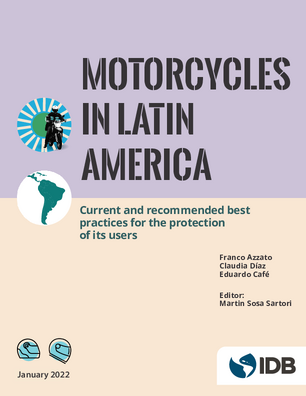Motorcycles in Latin America: Current and Recommended Best Practices for the Protection of its Users
Date
Jan 2022
EDITOR
Sosa, Martín
The World Health Organization, in its publication "Global Road Status Report on Road Safety, 2018" establishes that, each year, approximately 1.35 million people die in the world due to traffic accidents. On average, every 24 seconds, a person dies due to high accident rates. Road accidents have become the eighth leading cause of death -worldwide- for people of all ages, and, in the range from 5 to 29 years old, these road events represent the leading cause of death. Vulnerable Traffic Users (a group that brings together motorcyclists, cyclists and pedestrians), in turn, represent 54% of the total deaths mentioned above. In particular, users of motorcycles and mopeds represent 28%, which means a figure of approximately 378,000 users killed per year. Latin American countries are no strangers to the problem of high road accidents, and in many countries in the region, the representativeness of deceased motorcycle users far exceeds the world average mentioned above. The growing presence of motorcycles as a vulnerability factor on the roads in Latin America requires regulations based on evidence. The 2025 Vision of the Inter-American Development Bank, called “Reinvest in the Americas. A decade of opportunities”, aims to help boost the recovery of the region after the crisis caused by the Covid-19 pandemic. In this sense, collective measures must be taken to build -among other needs- stronger and healthier societies. The reduction of mortality caused by traffic is therefore imperative to contribute to the achievement of the objectives set.
This study aims to gather the available literature on the subject and contribute to the different countries to review their regulations for the safety of motorcyclists.
This study aims to gather the available literature on the subject and contribute to the different countries to review their regulations for the safety of motorcyclists.




